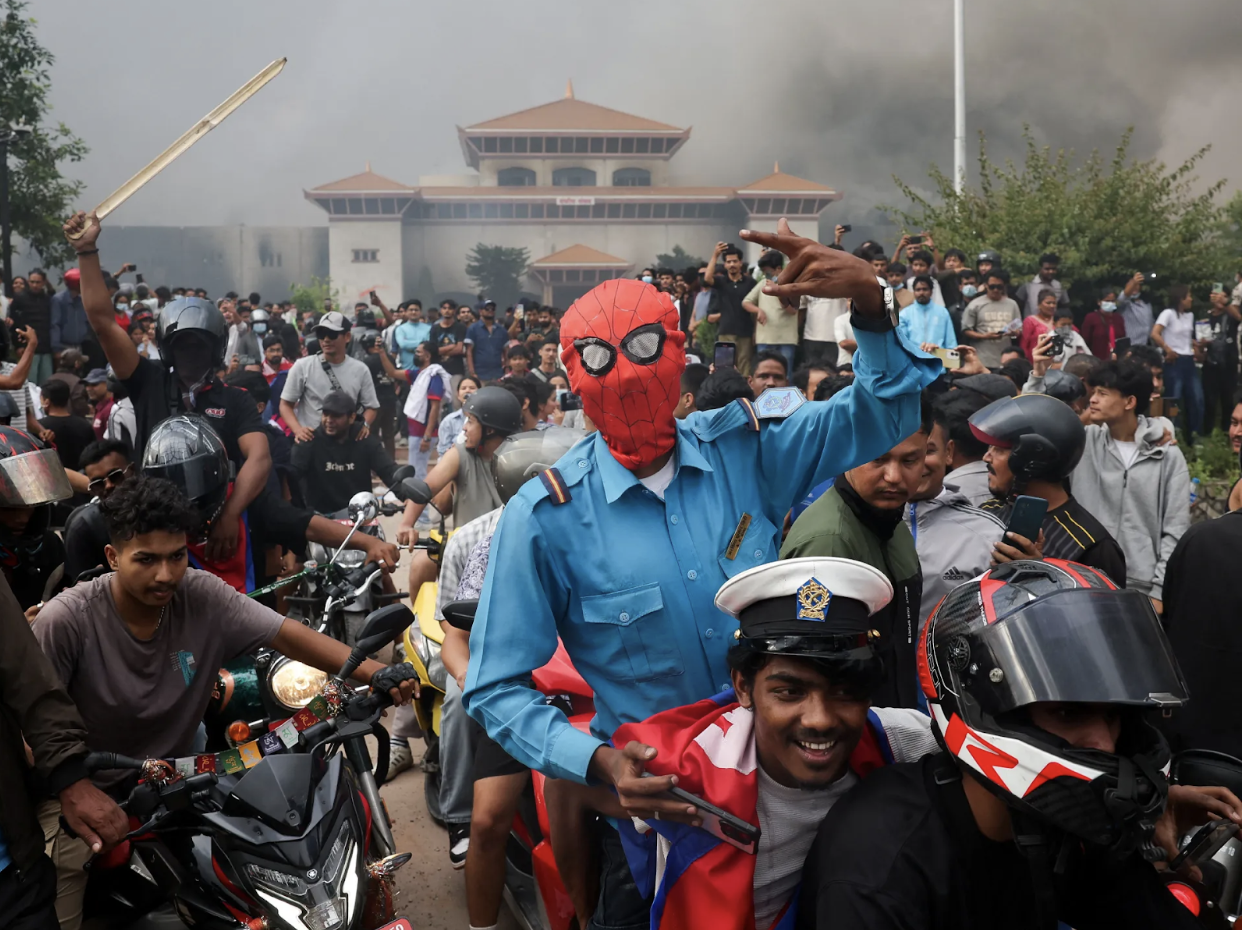Photo via Al Jazeera
***
Nepal is a small South Asian country sandwiched between India and China, and up until recently, it has not been given prominence on the world stage. However, an event earlier this month marked a significant change within the nation. Violent protests broke out due to a recent ban on social media apps with over 70 dead and 200 injured in the capital, Kathmandu. This historical turning point has been defined by the involvement of one specific demographic within the country: Gen Z. With a new prime minister being elected, it’s essential to look at how Nepal reached this level of political instability and why Gen Z was the demographic to lead such change.
To fully understand what has broken out in Nepal, it is important to contextualize the kind of government that the country runs under. Nepal is currently run by a federal parliamentary republic-style government, established in 2015 in its constitution. This entails a state structured federally, with power divided between the central government and the seven provinces. The system features a head of state president and a prime minister who serves as the head of the government, elected by a bicameral legislature. Essentially, the prime minister and the parliament hold the majority of government power, while the president has a strictly ceremonial role.
The apps that were banned include WhatsApp, Facebook, and Instagram. The reason for the ban is that said apps did not register with Nepal’s regulations. More specifically, the platforms did not register with the Ministry of Communications and Information Technology, where platforms that were registered were supposed to appoint a local contact and grievance officer and comply with the ministry. The regulations aim to minimize misinformation from being spread, social disruption, and different cyber-related crimes. When the bill was introduced, it was immediately criticized for fostering censorship and violating citizens’ freedom of expression. Regardless of the backlash, the bill was still passed—with an immediate reaction ensuing.
The protesters were able to get access to government buildings and the parliament and set fire to them. Some protesters even managed to attack the residences of prominent political figures in the country, including members of Congress, attempting to set their homes on fire. The Nepali government responded by administering army troops on the ground to monitor the protests, with the troops utilizing live ammunition, tear gas, and water cannons on the protesters, and even implementing a strict curfew. However, this did not stop the protesters, who carried on with their demonstrations in the following days.
Different heads of government have attempted to control the damage of the situations and the protests. The head chief of the army, Ashok Raj Sigdel Chettri, invited Gen Z protesters to an open dialogue with hopes of finding a solution that satisfies everybody. The protesters have two main demands: that the government terminate the social media ban, and that the government end “corrupt practices” within the Nepali government. The corrupt practices translate into leaders’ broken promises during elections and restrictions on freedom of speech. This maintains that the protesters’ reaction isn’t in response to the ban on social media, but rather rooted in deeper problems that have run rampant in the country.
As mentioned before, the majority of the protesters that have been showing up have been part of Gen Z, meaning people born from 1997 to 2012. Why has this demographic stood out in this specific political unrest? Currently, no primary groups are leading the protests, but rather different groups have come together over the past few days to demonstrate together. The message of the protests also spread quickly throughout college campuses in the country, another reason why Gen Z participation has been high. Also, pre-dating the protest movements across social media, Gen-Z were populating the hashtags #Nepobaby and #Nepokid, calling attention to how politicians’ children and families are living too luxuriously while the rest of Nepal is left to fend for itself.
The protests caused such disruption within the nation that they forced its prime minister, KP Sharma Oli, to step down and resign. Most protesters cited him as a leading factor of corruption in the country, growing increasingly unpopular in public opinion. His resignation letter stated, “I have resigned from the post of prime minister with effect from today … in order to take further steps towards a political solution and resolution of the problems.” Following his resignation, a new interim prime minister has been appointed—Sushila Karki, the first woman to hold the role of prime minister in the country. She already has experience working in the Nepali government, as she was also the first woman chief justice to serve in the judiciary. From her first few days in office, she has ordered officials to start rebuilding what was destroyed during the protests, but challenges still lie ahead for addressing the problems of “corrupt practices” in Nepal, and how she approaches them will be critical to her approval among the Nepali public.
***
This article was edited by Sidney Blasco and Sophie Reilly.
